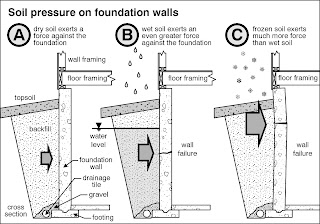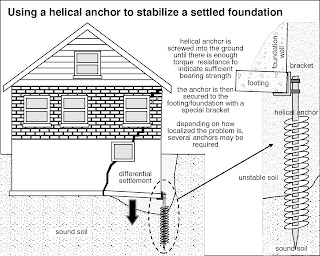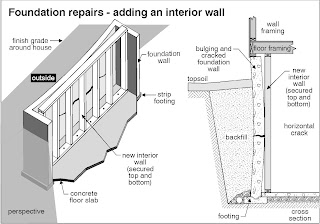When you're buying a home, new or old, you typically want to understand exactly how long it's going to last. What is your investment going to mean in the future? If you plan to move into a house to spend your life in, you want it to last as long as you will!
Naturally, the quality of appliances and the home, as well as how it has been treated in the past or will be treated in the future will all effect longevity.
CAHPI ( the Canadian Association of Home and Property Inspectors ) has made a list that breaks down the lifespan of certain features of your home. Read below for a better understanding of your home or the home you are planning to buy!

Appliances:
Of the major appliances in a home, gas stoves have the longest life expectancy at 15 years. Dryers and refrigerators last about 13 years. Appliances with the shortest life spans are compactors (six years), dishwashers (nine years) and microwave ovens (nine years). Some appliances don't meet their life expectancy, however, because changes in styling, technology and consumer preferences may make newer products more desirable. Also, how long they last depends on how much they are used.
Tankless water heaters last more than 20 years, while an electric or gas water heater has a life expectancy of about 10 years.
Decks
The life span of these can vary significantly according to different climates, but they should be around for a good 20 years under ideal conditions.
Doors
Exterior fiberglass, steel and wood doors will last as long as the house stands, while vinyl and screen doors have life expectancies of 20 and 40 years respectively. Closet doors are expected to last a lifetime, French doors for 30 to 50 years.
Flooring
All natural wood flooring, marble, slate and granite will last for 100 years if they are well taken care of. Vinyl floors will endure for up to 50 years, linoleum about 25 years and carpet between eight and 10 years, depending on traffic and care.
Aluminum windows last between 15 and 20 years, while wooden windows can last upwards of 30 years.
Footings and Foundations
Poured as well as concrete block footings and foundations last a lifetime, assuming they were properly built. Termite proofing will protect foundations for about 12 years if the chemical barriers put in place during construction are left intact. Waterproofing with bituminous coating can start to spring leaks in 10 years, unless it cracks, in which case mortal damage is immediate. Concrete or cast iron waste pipes are made to last a century at least.
Poured-concrete systems, timber frame houses and structural insulated panels will all last a lifetime, as will wall panels and roof and floor trusses. Softwood, hardboard and plywood average 30 years, while OSB and particleboard last twice as long.
Heating, Venting and Air Conditioning
HVAC systems need proper and regular maintenance in order to work, but even when they are pampered most of their components last only 15 to 25 years. Furnaces live for 15 to 20 years, heat pumps for 16 and air conditioning 10 to 15. Thermostats usually are replaced before the end of their 35-year life span because of technological
improvements.
Insulation and Infiltration Barriers
Cellulose, fiberglass and foam used in insulation materials will last a lifetime provided that they are not punctured, cut or burned; are kept dry; and are not subjected to UV rays. This pertains whether the insulation was applied as loose fill, house wrap or batts and rolls.
Roofing & Siding
Slate, copper and clay/concrete roofs have a 50-year life expectancy; asphalt-shingle roofs, 20 years; fiber cement shingles, 25 years; and wood shakes, 30 years. However, the life of a roof depends on local weather conditions, proper building and design, material quality and adequate maintenance.
Outside materials typically last a lifetime. Brick, engineered wood, both natural and manufactured stone and fiber cement will last as long as the house. Exterior wood shutters are expected to last 20 years, depending on the weather. Gutters made of copper can last 50 years, of aluminum, 20. Copper downspouts last 100 years or more; aluminum, 30 years.
Site and Landscaping
Most landscaping elements have a life expectancy of 15 to 25 years. Sprinklers and valves last 20 years; underground PVC piping, 25 years. Polyvinyl fences are designed to last a lifetime, and asphalt driveways should last up to 15 to 20 years. Tennis courts can last a lifetime if they receive a new coat when they need one every 12 to 15 years. The concrete shell of a pool should do swimmingly for more than 25 years; the interior plaster and tile will start showing their age in about 10 to 25 years.
Walls, Ceilings and Finishes
They should last as long as the home, and over a lifetime should only require minimum repair and up keep if the home is treated fair.
We hope this guide answered some of your questions about the longevity of certain home features! Keep updated for more at HomeCrafters.net



















